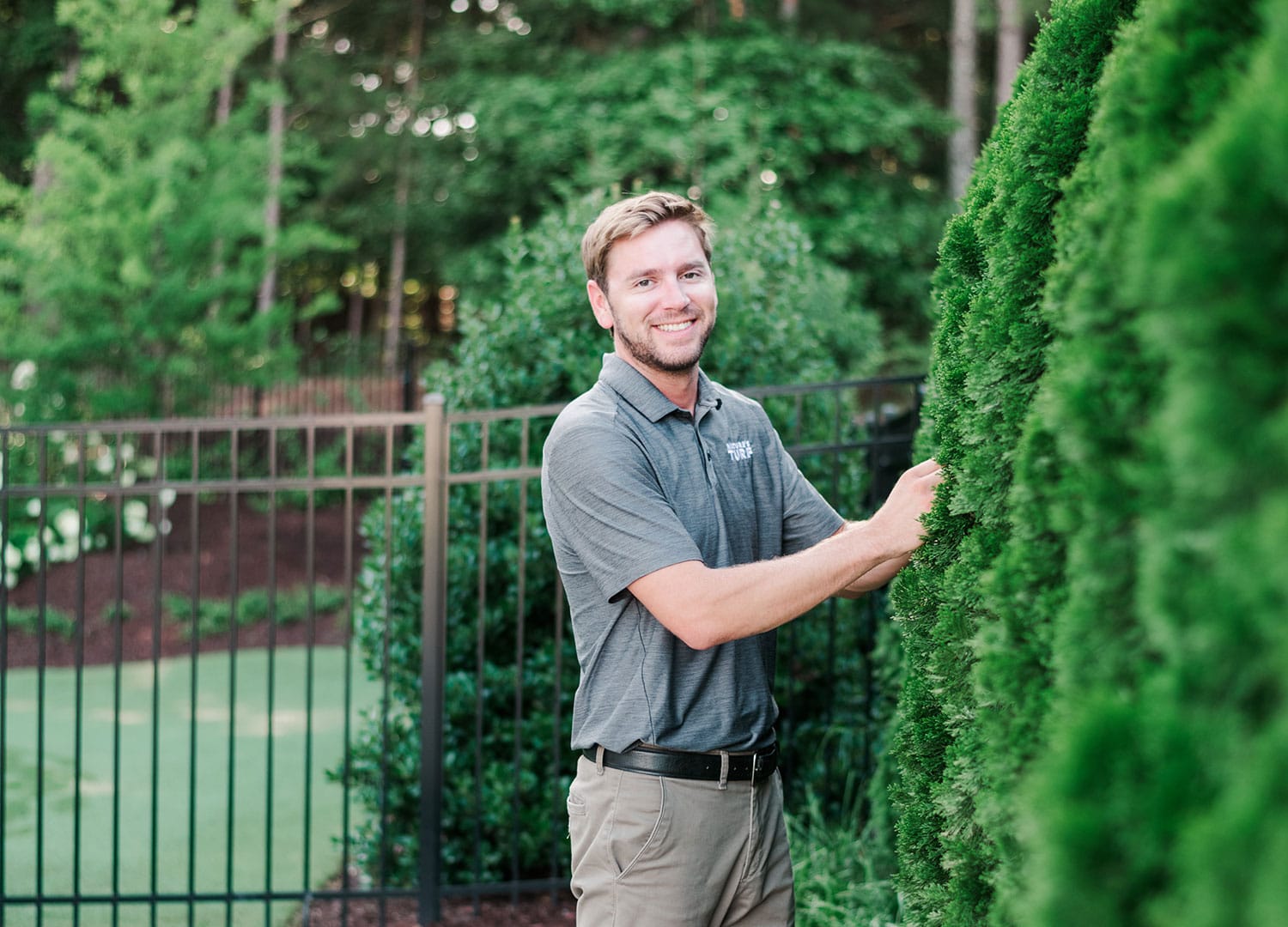Convincing people they need irrigation for their lawn isn’t usually difficult, but persuading people of the importance of watering their ornamental plants is another story. If you’ve never watered your trees and shrubs, you probably haven’t seen the full potential of your landscape plants. One of the core functions we consider when designing our programs here at Nature’s Turf is value. Properly watering your landscape plants takes that next step toward landscape health and helps ensure that you get the most value out of your tree and shrub care treatments. Let’s discuss the best watering methods to use for watering your ornamentals to get the best results.
Should I Just Use My Hose to Water My Ornamentals?
Answer: When you first plant trees and shrubs, you should water the bases with a hose, but once they are established, watering them with a hose is still possible—but laborious. During establishment, watering with a hose is the best way to get enough water to the root mass. Apply the water to the soil around the base of the plant, avoiding repeated applications to the foliage and blooms, to get the best results. Imagine the size of the pot or ball it arrived in, and sufficiently water that space and the soil a few inches beyond it.
Once your trees and shrubs are established, planning to hand water with a hose as the primary method can be challenging. Vacations, health issues, and even everyday life gets in the way of the best-laid plans. Watering deeply is time consuming, and maintaining a schedule isn’t always easy. Providing the same amount of water consistently is also difficult, making excessive or insufficient water issues difficult to diagnose and fix.
Using an irrigation system enables you to schedule watering times, set the frequency, and adjust the amount of water your plants receive—whether you are at home or not. While irrigation systems do require maintenance and attention, they take care of the time commitment and scheduling. If you have a zone receiving too much water, you can reduce the time. If a zone is not receiving enough water, you can increase the time after ensuring the issue isn’t due to equipment damage or failure. Irrigation systems can also irrigate at optimal times, reducing loss to evaporation and decreasing disease.
What Kind of Irrigation System Should I Use?
Overhead Irrigation
Overhead irrigation refers to the sprinklers you’re likely familiar with. Heads pop out of the ground and spray water in the air, retreating when the zone finishes. They come in different shapes and sizes, allowing for some fine tuning, separating your landscape zones from your turf zones.
Misting and spinning heads are often used to apply water to low-growing planting areas such as ground covers, annual plantings, and low-growing shrubs. The type of head and duration for each zone dictate how much water each area receives, making these systems relatively flexible.
Benefits include: a less expensive entry cost compared to other systems and easier troubleshooting than drip irrigation.
Downsides include: exposure to incidents such as heads damaged by mechanical means like mowers and repeated application of water to the foliage and blooms of ornamental plants. Water on leaves and flowers can cause spotting, disease, and loss of moisture to evaporation that never reaches the intended target.
Drip Irrigation
Drip irrigation systems deliver water directly to the ground/root mass of the desired plants. This is done with specialized nozzles on application-specific tubing either running on the surface or lightly covered with mulch. Strategically planning zones and duration make this method of application flexible to your landscape’s needs as well.
Drip irrigation systems are often used for ornamental trees where overheads may just saturate the surface of the ground. Shrub rows, flower beds, and ground covers also benefit from drip irrigation, eliminating water applied to the leaves or blooms. This relieves one of the primary concerns created by traditional, overhead irrigation systems.
Drip irrigation’s benefits are tied to its delivery method.
Benefits include: placing water directly where the plants use it, reducing health concerns and water loss.
Downsides include: a more expensive upfront cost, less flexibility after install, fragility related to its exposed piping, and decreased potential for troubleshooting since it’s not as visible when operating.
Bottom Line: You Should Water Your Ornamental Trees and Shrubs
Choose a watering method that works best for you and your lifestyle, and water your ornamental trees and shrubs appropriately to get the healthiest, most beautiful results. The system you choose matters less than the decision to irrigate your landscape plants. Mature trees and shrubs with established root systems may be slower to show drought stress than your lawn, but they feel it in all of the same ways. Drought not only causes the stereotypical discoloration we associated with drought, but also limits the uptake and use of nutrients, regulating their potential and hardiness.
Give us a call at 770-461-4156 or email us at info@naturesturf.com with questions if your plants aren’t performing as well as you’d hoped. Our support staff would love to talk about the environment, maintenance, and cultural practices required to see the most your plants have to offer.








